https://www.fastcompany.com/90413038/apples-iphone-recycling-robot-can-take-apart-200-iphones-an-hour-can-it-dismantle-the-companys-footprint
Apple’s iPhone recycling robot can take apart 200 iPhones an hour—can it dismantle the company’s footprint?
The company is trying to find ways to get more materials out of its old products, but recycling advocates say it needs to be changing how they’re designed, not how they’re recycled.

[Photo: Apple]
Inside Apple’s sprawling materials recovery lab in Austin, a custom room-size robot with five separate arms has pulled apart hundreds of thousands of iPhones over the last year, making it possible to access the valuable materials inside for recycling. Nearby, the lab is filled with standard equipment that already exists in electronic recycling facilities around the world, so academics and Apple engineers can study ways to improve traditional recycling. It’s part of the company’s work toward a larger vision of a circular economy: What will it take to make electronics in a truly closed loop?
“Our goal is that future products would be made from recycled or renewable materials,” says Lisa Jackson, Apple’s vice president of environmental, social, and policy initiatives, who served as the head of the Obama-era EPA before joining the tech company. “So, in a sense, the materials that are in yesterday’s iPhone . . . could find their way back into the same supply chain we use to make tomorrow’s.”
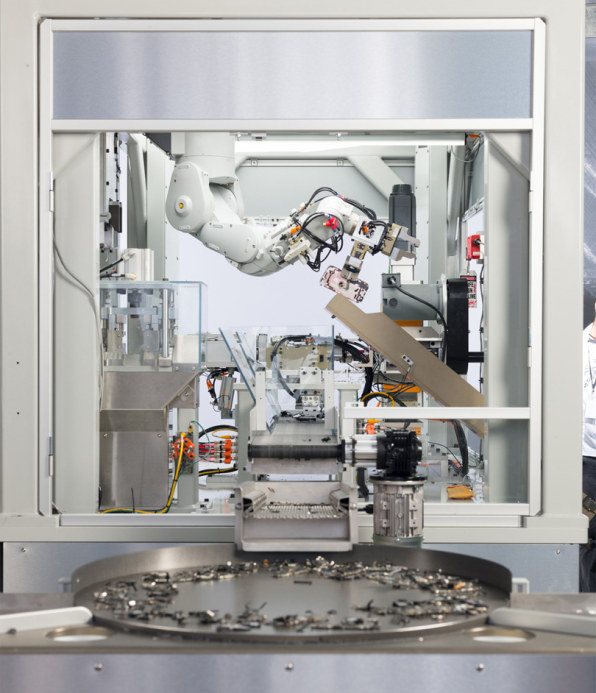
Today, smartphones are made with dozens of materials—from gold and silver to phosphorus and titanium—mined in processes that are often environmentally and socially destructive. But all of those materials could eventually be recovered from old electronics instead. “We have lots of trials going on with various specialty recyclers, really around the world, who are all trying to figure out how to get the hundred or so elements of the periodic table back out of our devices and other devices after they come to [their] end of life,” Jackson says.
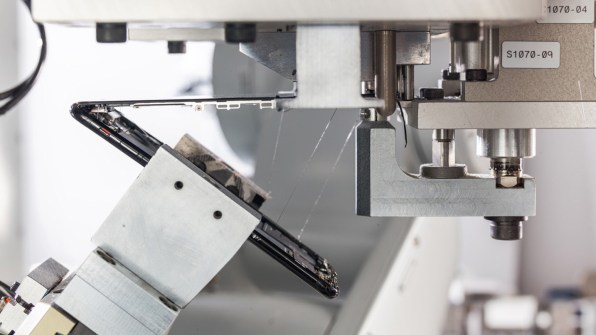
Earlier this year, the company announced that it was using recycled cobalt in new batteries for the first time, sourced from old iPhones that Apple collected through a trade-in program and then disassembled with Daisy, its custom recycling robot. Avoiding the need to mine cobalt is a major step; the majority of the world’s cobalt comes from the Democratic Republic of Congo, sometimes mined by hand (despite the toxicity of the material) in dangerous pits. Mining waste can pollute local drinking water. Though Apple audits its suppliers to make sure they meet the tech company’s standards for supplier responsibility—and scored highest in a recent report about how companies manage conflict minerals—it can be difficult for companies to fully track what each supplier is doing. And even if a particular mining company avoids human rights abuses such as child labor, the basic process of digging any material out of the ground (sometimes with heavy machinery or explosives), and smelting and refining it, has an environmental cost. Recycling materials from the billion-plus iPhones that already exist makes more sense.
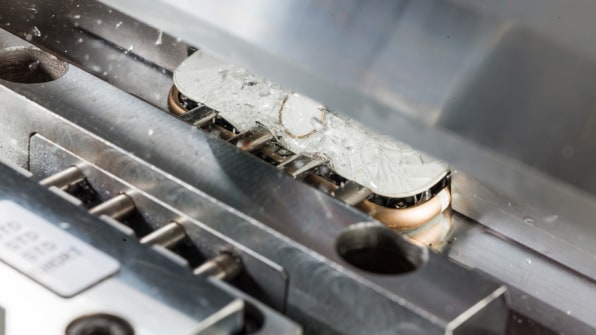
The company’s massive robot, which it considers a pilot project, is one experiment in finding a way to better access materials in old phones. At e-waste recycling plants now, old electronics go through shredders that tear up the device before the materials are sorted and sold on the commodities market. The process of shredding makes full recovery impossible; valuable rare earth minerals used as magnets in the iPhone’s speaker, for example, can attach themselves to other metal during the process and be lost.
The robot works much more carefully, though it can disassemble as many as 200 phones in an hour. Recovering more of an individual material—like cobalt—makes it possible for Apple to have enough volume to convince a recycler to take its material so it can be recycled back into new batteries. The company spent years developing the technology behind Daisy, which builds on another disassembly robot, called Liam, that it released in 2016. It now has two massive, 33-foot-long Daisy robots, and continues to improve the design. But the company recognizes that it also needs to find ways to work with the existing recycling process for electronics even as it continues exploring brand-new technology. “We have to do both,” says Jackson. “We found that the state of the recycling sector has really not moved much when it comes to consumer electronics.”
It’s critical to work with existing systems, says Kyle Wiens, CEO of the electronics repair company iFixit. “The idea that you can have a specialized robot that’s designed for one product that can take it apart carefully and precisely and get you a better material yield for that product—that’s totally true,” he says. “You can do that . . . You’re going to get more gold running it through Daisy than you would through a traditional recycling process. However, the idea that [a recycling plant has to] have to have a million-dollar robot per product that they’re going to disassemble just doesn’t work. It’s not the way recycling works.”
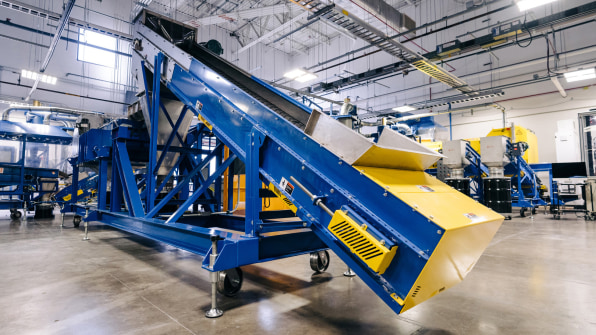
If you walk into an electronics recycling facility, Wiens says, you’ll see thousands of different kinds of products. When he visits a massive facility in Fresno, California, he likes to play a game, picking up the first laptop he sees and then trying to find another laptop that’s the same model; it can be nearly impossible. The facility has one huge machine that can process anything. While Apple’s robot can work with newer iPhones (and could potentially be used by other companies, since Apple has said that it is willing to share the IP with anyone who asks), it doesn’t actually work with the iPhone 4, which is the phone that is most likely to be old enough to actually be at its end of life now. And because Apple phones are distributed all over the world, it’s logical to work with recyclers that are distributed around the world rather than sending all of those phones back to a handful of specialized machines. The company’s work making more incremental changes to existing equipment may end up being most impactful for the industry.
As Apple continues to improve recycling technology, it’s also using its size to create more demand for recycled materials. “We believe our job is twofold,” Jackson says. “The first is to help bring about the innovations that are needed so that the circular economy can go from a technology perspective, and then to bring about the marketplace. Because as Apple demonstrates a clear intention to favor recycled materials, we’re hoping that that encourages more entrepreneurs and inventors and engineers and others to think about ways to be a part of the circular economy.”
The company is now using recycled rare earth minerals in its latest iPhones, recycled tin in the logic boards of several different products, and recycled aluminum in new MacBook Air and Mac mini computers, helping those computers nearly halve their carbon footprints. It’s just the beginning, of course, of a long list of materials that it could get from recycled sources; it’s not clear how long it will take to get to the point where a new iPhone or computer is made from 100% recycled materials. “We don’t give a date, because we knew it was pretty aspirational,” Jackson says, adding, “We’re going to learn some things over the next two years that are going to change the marketplace. We do need other companies to come along on this ride. We’re hopeful that that happens, but in the meantime, I think we can make a tremendous amount of progress.”
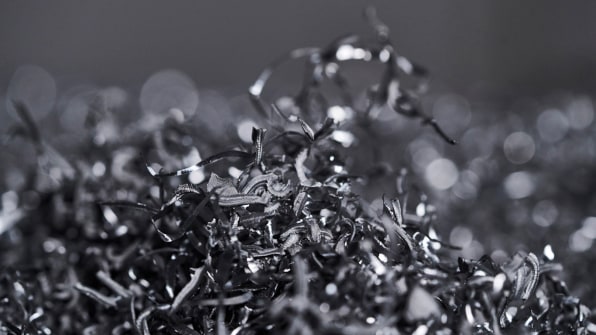
The company also works to design products that last, she says. From an environmental perspective, making phones that can stay in use is as important as what happens when they finally reach the end of life. In its trade-in program, which gives customers credit toward a new phone when they send in an old one, Apple refurbishes and resells the majority of devices. The work to improve longevity could go further, says Wiens, saying that the phones could be designed to be easier to repair. Most consumers, for example, don’t know that their phone battery should be replaced after a certain number of uses, and when their phone slows down, assume that they need a new one.
But Apple, like other brands, has opposed right-to-repair laws in the past, though it recently began allowing third-party repair shops to fix its products. Wiens says the company should go further, and make it easier for consumers to repair phones and other electronics themselves; some design changes, like making the battery easy to remove without tools, would also be helpful for recycling centers, which have to remove batteries to avoid fires. Some products, like Airpods, can’t be recycled now because the battery can’t be taken out. “They’re not possible to run them through a traditional recycling stream because they’ll catch on fire,” he says. The company’s laptops, he says, are also more difficult to repair and recycle than its phones. (Wiens’s website gives the iPhone X a repair score of 6 out of 10; a 2018 Macbook Pro has a score of 1 out of 10.)
If many more phones are repaired and last longer, it raises questions about business models—if a company needs to continually sell more products to survive, is that at odds with sustainability goals? Apple does offer a leasing program, with a monthly subscription, that gives consumers new phones each year and takes back the old phones—that’s one way that a company can take more control over the eventual fate of the materials it uses.
That type of model can also incentivize companies to design products so they’re easier to repair and upgrade. (Some companies are moving more clearly in that direction. IKEA, for example, is exploring how it can rent furniture instead of selling it as a way to keep products and materials in use longer.) “From a material-efficiency perspective, I don’t think that’s crazy,” says Wiens. “Apple gets the phone back, they can refurb it, they can sell it, and then people always get a new phone. So that’s a reasonable way of Apple maintaining control of the product and being able to optimize the environmental efficiency.”
沒有留言:
張貼留言